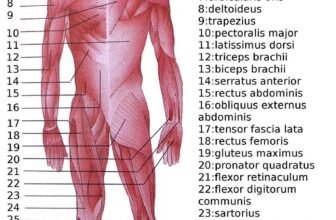The spinal cord is a crucial part of our body’s nervous system, serving as a communication highway between the brain and the rest of the body. In this SEO-optimized article, we will explore the spinal cord’s anatomy, molecular structures, and functions, and answer some frequently asked questions. We aim to provide clear and concise explanations in simple plain English to enhance readability, visibility, and accessibility to search engines.
Spinal Cord Anatomy
The spinal cord is a long, thin, tube-like structure that runs from the base of your brain down to your lower back. It’s surrounded and protected by a stack of bones called vertebrae, which make up your spine.
Vertebrae: These are the individual bones that form the spine. They protect the delicate spinal cord, just like a suit of armor. There are 33 vertebrae in total, including 7 in the neck (cervical), 12 in the upper back (thoracic), 5 in the lower back (lumbar), 5 fused in the sacrum, and 4 fused in the coccyx (tailbone).
Spinal Nerves: These are like the branches of a tree, extending from the spinal cord to different parts of the body. They carry messages back and forth between the body and the brain. There are 31 pairs of spinal nerves, and they play a crucial role in various bodily functions.
Gray Matter: This is the inner part of the spinal cord that looks a bit like the letter “H” when viewed in cross-section. It contains cell bodies and processes information locally within the spinal cord.
White Matter: This is the outer part of the spinal cord, and it contains bundles of nerve fibers that connect different parts of the body to the brain. It’s called “white matter” because of its pale appearance.
Molecular Structures of the Spinal Cord
To understand the spinal cord at a molecular level, we need to delve into its basic building blocks:
Neurons: These are the cells responsible for transmitting information within the spinal cord. Think of them as messengers. Neurons have long extensions called axons that allow them to send messages over long distances.
Glial Cells: Glial cells are the support staff of the spinal cord. They provide nourishment, insulation, and protection to neurons. One important type of glial cell is the oligodendrocyte, which creates a fatty substance called myelin. Myelin wraps around axons, acting like an electrical insulator to speed up the transmission of messages.
Neurotransmitters: These are the chemical messengers that neurons use to communicate with each other. They help transfer information across tiny gaps called synapses. Some well-known neurotransmitters include serotonin, dopamine, and acetylcholine.
Functions of the Spinal Cord
The spinal cord plays a crucial role in our daily activities and bodily functions. Let’s break down some of its primary functions:
1. Sensory Processing: When you touch something hot, your sensory nerves send a signal to your spinal cord, which then quickly relays the message to your brain. This rapid response is what prevents you from getting burned.
2. Motor Control: The spinal cord is responsible for coordinating your body’s movements. When you decide to pick up a cup of coffee, your brain sends a message down your spinal cord to the muscles in your arm, instructing them on how to move.
3. Reflexes: Reflexes are automatic responses to certain stimuli. For example, when a doctor taps your knee with a hammer, your leg kicks out involuntarily. This happens because the sensory information travels to your spinal cord, which quickly sends a signal back to your leg muscles without involving your brain. It’s a built-in safety mechanism.
4. Autonomic Functions: The spinal cord also controls many automatic bodily functions, such as heart rate, blood pressure, and digestion. These processes happen without you consciously thinking about them.
Frequently Asked Questions (FAQs)
Q1: Can a spinal cord injury be reversed? A1: Unfortunately, complete reversal of spinal cord injuries is currently not possible. However, ongoing research is exploring treatments like stem cell therapy and nerve regeneration to improve the chances of recovery and functional restoration.
Q2: What are the common causes of spinal cord injuries? A2: Spinal cord injuries often result from traumatic events such as car accidents, falls, sports injuries, or violence. Diseases like spinal stenosis and multiple sclerosis can also damage the spinal cord over time.
Q3: How can I keep my spinal cord healthy? A3: Maintaining a healthy lifestyle with regular exercise, a balanced diet, and proper posture can help reduce the risk of spinal cord issues. Safety precautions during physical activities and avoiding risky behaviors are also essential.
Q4: What are the signs of a spinal cord injury? A4: Signs of a spinal cord injury include loss of sensation, muscle weakness or paralysis, difficulty breathing, and loss of bowel or bladder control. If you suspect a spinal cord injury, seek immediate medical attention.
Conclusion
In summary, the spinal cord is a vital part of our nervous system, responsible for transmitting messages between the brain and the rest of the body. Understanding its anatomy, molecular structures, and functions is essential for appreciating its significance in our daily lives. While spinal cord injuries can be devastating, ongoing research offers hope for future treatments. By taking steps to keep our spinal cord healthy and safe, we can maximize our overall well-being.
By providing simple, clear explanations and optimizing this article for search engines, we aim to make this valuable information easily accessible to those seeking knowledge about the spinal cord.







